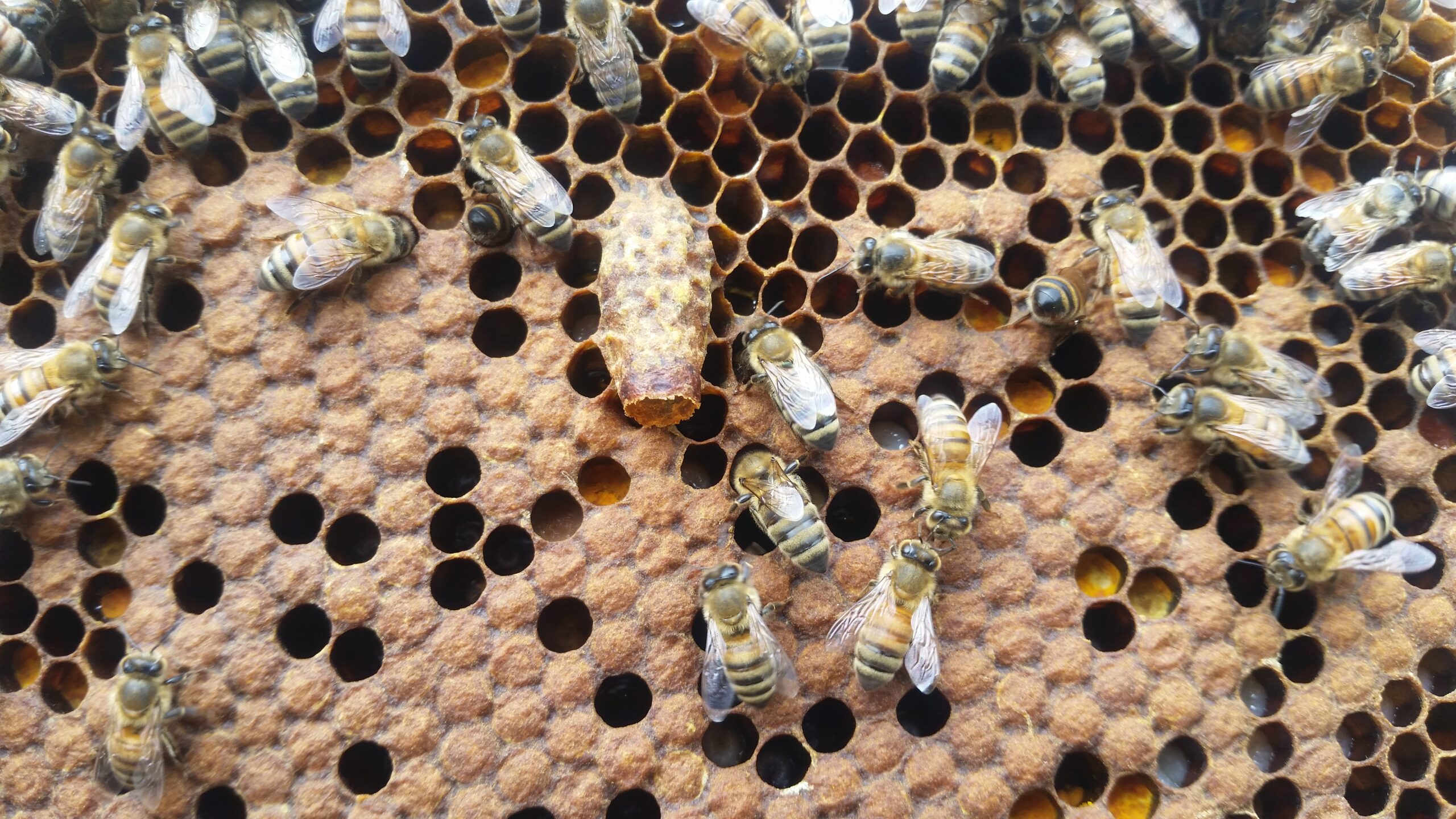
Due to time limitations, it may be advantageous for a beekeeper to use the ‘walk-away’ split method as a swarm prevention method and/or for starting a new hive. I have found this method to be easy and mostly carefree.
After describing the method and process to a friend, I began to wonder how I could increase the likelihood of my colony’s success in raising a new queen – what variables I might be able to change that resulted in a better chance of success. I did some research and found an intriguing article that seems to provide some answers.
A project from NC State[1] evaluated conditions that influence a colony’s capacity to successfully raise a new queen. Their research found four factors that increased the likelihood for mating success:
- Number of bees in the hive: Medium population density
- Brood age and type: Brood age of predominantly eggs/larvae
- Comb age: New to medium age comb in the split; using newer wax combs was recommended.
- Placement of split hive: Movement to a different bee yard
“Our hypothesis was that the most densely stocked splits would be the most successful, but this was not the case especially in the smaller volume nucs. The most successful splits had a “medium density” of bees, better than a “strong density” of bees and “weak density” of bees. This trend of “medium density” was consistent in all hive types except 4 frame Langstroth.”
Their first point – “medium population density” – surprised me. The note, above, from the literature provides more insight. Their definition of “density” is determined from the number of bees in the hive. (They have an easy-to-use equation to determine this value.) For a deep, 10 frame Langstroth hive box, this “medium” density figure is approximately (.75 x 21,000=) 15,750 bees. The bottom line is that a more densely populated hive box does not generate a more successful outcome (of a raised queen).
“Despite data showing better results of moving the split to a new property, moving the split within the yard is much easier for any beekeeper. Thus in-yard movement of well-populated hives is our recommendation.”
A note about their last point – “movement to a different bee yard”. Where available space is a limiting factor, for example in an urban environment (backyard beekeepers), it can be challenging if not impossible to find another bee yard to use for splitting beehives. The issue with keeping the split in the same beeyard is that older bees tend to fly back to the original location after the split. When this happens, the loss of bee population can subject the separated hive to temporary starvation and to pests such as ants or small hive beetles. Yet, finding another beeyard and the act of moving hives can be challenging. The research team’s conclusion, shown in the above quote, is that moving the split hive out the beeyard is not critical.
When we use techniques and strategies that give our colonies a better chance for success in raising their own queen, not only does the colony survive but other benefits are realized too:
- We are raising locally-adapted bees, bees that are naturally adapted to and better suited for our local environment.
- The brood break slows the interregional movement of new parasites and diseases and it reduces the varroa mite load which is significant, useful and necessary.
- As a beekeeper, my confidence is increased. Each time my bees reach success, my knowledge and confidence in beekeeping grows.
- I have extra hives and can either sell them or I can use them as a starter for friends who are curious and have expressed an interest in beekeeping.
References
- “Testing Darwinian Honey Bee Breeding Protocols for Mass Replication: Evaluating the Efficacy of the “Walk-Away Split” as a Queen Rearing Method”: https://projects.sare.org/project-reports/fne20-964/